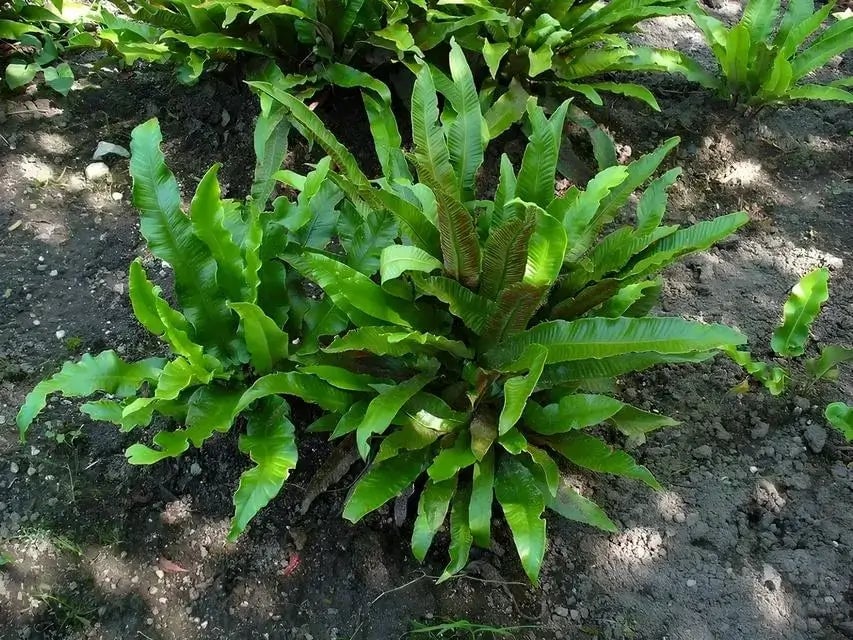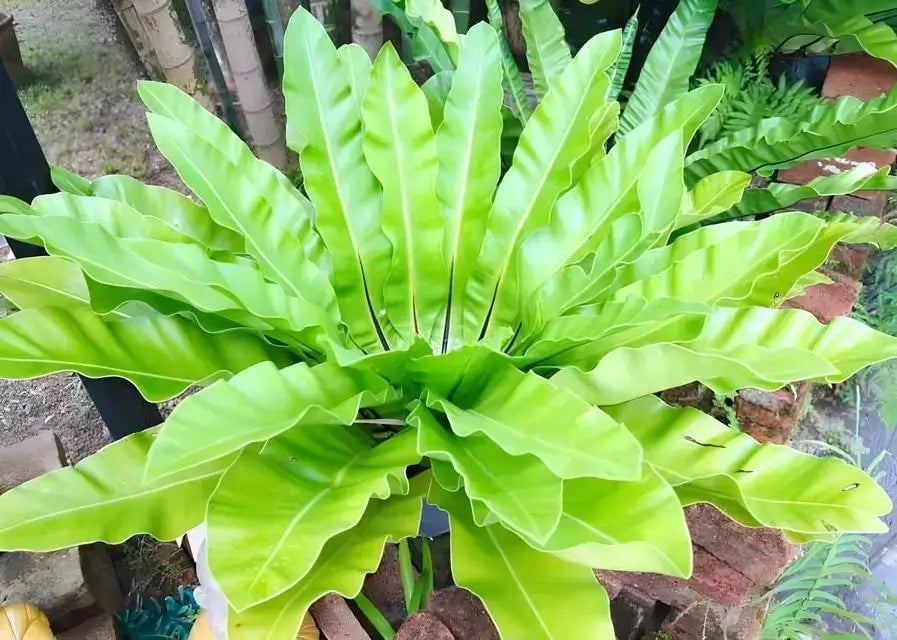



Walking Fern
This plant ships:
NowWe sell bare root plants - click here to see what you'll receive
Walking Fern - Asplenium rhizophyllum
The walking fern is a small, trailing perennial known for its unique ability to reproduce by growing new plantlets at the tips of its fronds, giving it the appearance of "walking" across the forest floor. These fascinating and unique plants can bring natural beauty and intrigue to any landscape. These attributes make them highly desirable for landscaping projects in wild and cultivated settings. Here are some critical characteristics that make them excellent additions to any landscaping endeavor.
Asplenium rhizophyllum, are low-lying perennial evergreens and typically relatively small. They're also an opportunistic plant, meaning they'll grow on fallen tree trunks, rocks, or land. As long as there's some moisture nearby, they're good to go.
The Frond Blades Of Walking Fern
They have smooth, narrow, and elongated dark green blades. Each frond blade is shaped like a triangle and comes to a tiny tip. Because of this, the bulk of this plant comprises the bottom portion of each one. Furthermore, you'll notice that this unique evergreen has eared lobes on both sides.
As mentioned, they take any opportunity to grow and run with it! Essentially, wherever its parent touches the ground is where they'll call their home. From there, these evergreens appear to be trekking across the ground, hence their name.
The Lifecycle Of The Walking Fern
Although their root tips are where each new seedling comes from, the entire process is a bit more complex. The form that most people see is only one of a two-part cycle. Water is an essential component of making new life. Without it, the gametes cannot fertilize the eggs. Fortunately, this is something other than something to worry about as they naturally grow in mossy, watery areas.
They Multiples Quickly
You can plant Walking Fern in various places, but looking for a mossy area in the shade is best. Either way, sit back and watch out once they've been planted! One plant will turn into two quite quickly, which will then propagate further and further. It's possible to purchase one of these evergreens and end up with at least a handful.
They Are Low Growing Perennials
Their reproduction rate and method make them a favorite of people who usually have difficulty growing things. They provide a very appealing look for a natural lawn, and you won't have to do much to ensure they survive and thrive.
Do they release spores
They grow by way of spores - the primary form of propagation. They produce these spores on the inner surface of their leaves in patches of pouches called sori, which mature blackish.
Why is Adiantum referred to as this
The reason this plant is called that is because the plant can actually 'walk' on the ground, which is a rarity for plants. It spurs new shoots each time the tips of the fronds meet the soil as the plant 'walks' for a while.
What do the spores do once they are expelled
Once the spores have scattered, they latch onto another patch of wet, appropriate soil and grow into a tiny, heart-like form: gametangia.
How do they reproduce
It produces both sexually (with spores) and asexually (the leaf tips produce new shoots planted in the soil).
What do you do with the leaves
For the leaves to look good, mist the leaves backside up or put a glass of water into a place that's appropriate to it. Do not put the walking fern in direct sunlight, and periodically wash the leaves with a freshwater solution to remove dust.
| Planting zone | [5, 6, 7, 8] |
|---|---|
| Height At Maturity | Under 2 Feet |






Walking Fern
This plant ships:
Now| Planting zone | [5, 6, 7, 8] |
|---|---|
| Height At Maturity | Under 2 Feet |

